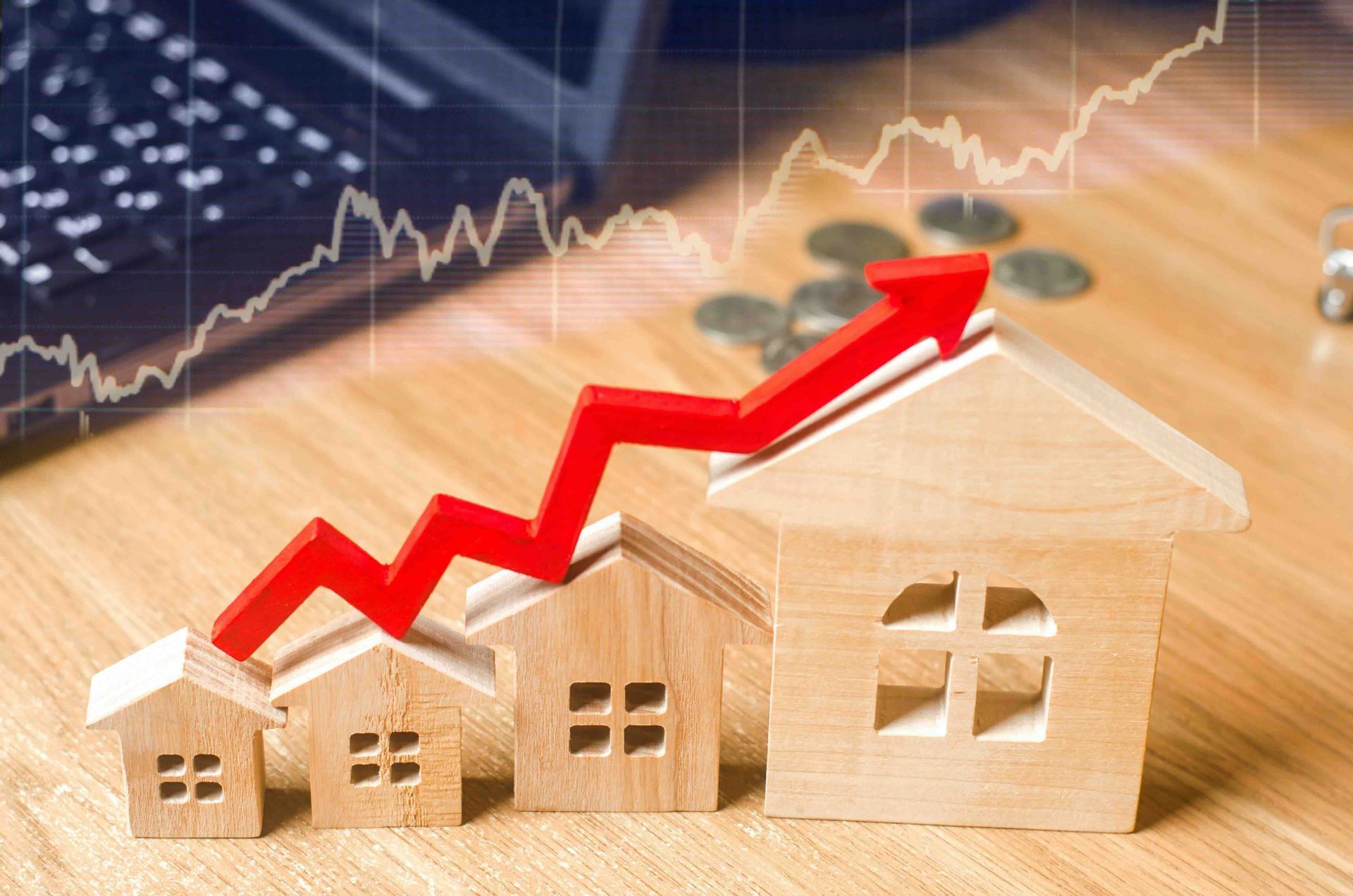327 W. Main Street, Suite 2, PO Box 65 Ionia, MI 48846
CALL US TODAY 616.522.6006
Your Home in a Changed World: Navigating Post-Pandemic Real Estate
The coronavirus pandemic wrought profound transformations upon the housing market landscape, initiating a seismic shift from the initial stagnation in home sales to the emergence of a scorching seller's market. The surge in remote work precipitated a migration of urban residents towards more spacious, cost-effective locales beyond city limits. This quest for additional living space became a defining trend at the onset of the pandemic and continues to influence buyer preferences.
How COVID-19 Affected House Flipping
Simultaneously, house flipping and residential real estate investing experienced an unprecedented surge. According to data from CoreLogic, investors seized a substantial 26 percent share of all single-family home purchases in June 2023, marking a significant escalation from the pre-pandemic figure of below 15 percent in March 2020.
Economic uncertainties in the nascent pandemic prompted a temporary standstill in housing sales and new construction. However, home values experienced a remarkable upswing as the economic environment stabilized. Presently, the National Association of Realtors reports a staggering increase in the median home price in the United States, soaring from a seemingly modest $280,700 in March 2020 to an impressive $406,700 by July 2023.
Results of the Initial Market Frenzy
The housing market frenzy of the initial pandemic phase was fueled by a convergence of factors such as record-low interest rates, families seeking more spacious dwellings during quarantine, and supply chain disruptions exacerbating the housing shortage. Homes were snatched up at prices exceeding their asking value within hours of hitting the market. Investment firms capitalized on the situation by swiftly acquiring housing stock for cash, and desperate buyers were willing to forgo inspections and contingencies.
However, the trajectory of the housing market underwent a significant evolution over time. Inflation, coupled with the Federal Reserve's proactive measures to curb it, led to a relentless increase in mortgage rates. As of August 23, Bankrate's national survey revealed that the average interest rate on a 30-year mortgage exceeded 7 percent, reaching its highest point since December 2000. Homeowners, reluctant to relinquish low-interest rates, further constricted the available inventory for prospective buyers.
A Shifting Real Estate Landscape
This shifting landscape has given rise to a "new normal" in affordability, diminishing the purchasing power of home shoppers, resulting in prolonged days-on-market and an overall reduction in home sales volume. In essence, both buyers and sellers are grappling with a challenging environment.
The impact of COVID-19 on home buying and selling extends beyond market dynamics to the very process itself. Virtual listings, already a standard practice, gained even more prominence as social distancing measures took precedence. Virtual viewings and closings witnessed a substantial surge, necessitating a significant reliance on video-enhanced listings to narrate the unique story of each home.
Technological advancements, already in play, experienced accelerated adoption during the pandemic, expediting the closing process. Automated loan underwriting improved efficiency, reducing appraisal turnaround times from weeks to just a week. These technological strides, enhancing the convenience of the selling and buying process, are poised to endure. While in-person closings are still conducted, many buyers and sellers opt for the convenience of remote transactions, marking a lasting shift in the industry landscape.
The impact is far-reaching, leaving an indelible mark on home sellers and buyers. The emotional nature of the market spurred a surge in sellers, particularly among empty nesters who expedited their plans to capitalize on premium prices. Remote work acted as a catalyst for selling decisions, prompting a notable exodus of sellers relocating to states with favorable tax structures, where the allure of obtaining more houses for their money proved irresistible.
The Impact on Home Sellers
However, a peculiar trend that characterized the pandemic era may not endure for home sellers. During heated market conditions, sellers often encountered multiple offers with inspection contingencies waived. This trend, fueled by buyers' urgency, diminished sellers' incentive to invest in pre-listing home improvements. With the market now experiencing a semblance of calm, buyers are less inclined to forgo a home inspection, signaling a shift towards increased scrutiny and potential concession requests to address necessary repairs.
The Impact on Home Buyers
On the flip side, the impact of COVID-19 on homebuyers has been equally transformative. States with low or no income taxes witnessed population growth, while urban areas and costlier states experienced declines. The pandemic heightened competition, leading many homebuyers to grapple with cash offers, the waiver of contingencies, and hasty decisions that resulted in subsequent regret. A Bankrate survey revealed that 6 percent of Gen Z'ers and 5 percent of Millennials identified buying more homes than they could afford as their primary financial regret.
What About First-Time Home Buyers?
For first-time homebuyers, cooling the market from its peak frenzy has not translated into unmitigated relief. The substantial influx of investment firms acquiring starter homes has exacerbated the housing shortage. Coupled with soaring mortgage rates pushing affordability limits, many aspiring first-time buyers are priced out of the market. Advocates for these buyers emphasize the need for regulatory shifts targeting large corporations to level the playing field.
The Cooling of the Housing Market
Despite these challenges, there is a silver lining for first-time homebuyers as the market cools. This juncture offers a strategic buying opportunity, with decreased competition providing time for buyers to assess budgets, select the right home, and potentially negotiate prices more comfortably.
Looking ahead, trends that emerged during the pandemic, such as the desire for more living space and dedicated home offices, are expected to persist. The remote work phenomenon, if sustained, will continue to drive demand for homes in states with lower living costs. Additionally, the digitization of the real estate process, which gained momentum during the pandemic, is likely to become a permanent fixture, reflecting the evolving preferences of a world recalibrated by the upheavals of a global pandemic. As stability remains a fundamental human need, the significance of where we live continues to underscore the profound impact of recent events on the real estate landscape.
The Global Financial Picture and Supply Chain Challenges
The global financial landscape bore the brunt of the pandemic's wrath as COVID-19 wreaked havoc, causing unprecedented disruptions to economies worldwide. With supply chains thrown into disarray, businesses and factories shuttered, and unemployment rates soaring, the Federal Reserve intervened, reducing interest rates to nearly zero in April 2020.
This strategic move aimed to alleviate the financial strain inflicted by pandemic-induced shutdowns. Concurrently, the 30-year fixed-rate mortgage rate also witnessed a reduction, allowing borrowers to accrue equity at an accelerated pace. However, the fluid nature of the current economic climate underscores the reality that interest rates can ascend as swiftly as they decline.
The pandemic-induced upheaval extended beyond financial markets to unleash supply chain challenges, profoundly impacting property development ventures and escalating prices. Global shutdowns triggered supply chain disruptions, hampering essential materials' availability and driving up building costs.
Lumber, a key component in construction, experienced staggering price hikes of up to 300%, coupled with substantial delays in procurement. Factors such as tree harvesting cutbacks, border closures, and the mothballing of mills contributed to the lumber shortage.
Moreover, disruptions in the production of steel, copper, and aluminum in China and the U.S., exacerbated by a superstorm in Texas, further compounded the crisis. The resultant manufacturing challenges affected various sectors, from steel fabrications to roofing, insulation, windows, and beyond, leading to a remarkable 26.1% surge in building material prices between June 2020 and June 2021.
The delicate balance of supply and demand in the real estate market experienced a significant shift. U.S. Census data revealed that 12.3 million new households formed between 2012 and 2021, while only 7 million new single-family homes were constructed.
The pandemic exacerbated Pre-existing housing shortages, leading to heightened competition and surging property prices. As of 2021, the average sales price of a new home reached $453,700, marking a substantial increase from the 2020 average of $391,900. Simultaneously, commercial spaces remained vacant as remote work gained traction.
Navigating the volatile real estate landscape after the pandemic remains a debate regarding the permanence and depth of its effects. Nevertheless, it is indisputable that COVID-19 has instigated a profound transformation in the real estate sector. Remote work, facilitated by virtual collaboration tools, has become a viable alternative, prompting employers to grapple with questions about the necessity of physical office spaces and the safety concerns of employees.
Traditionally a cornerstone of commercial real estate portfolios, the office sector experienced a sharp decline in sales volumes compared to pre-pandemic levels. Anxious investors are adopting a cautious stance or downsizing their property holdings, especially in non-prime areas.
Despite this uncertainty, adaptable entities have weathered the storm, with some industry leaders turning to hybrid work setups to bypass high office rental costs and associated overheads. The increasing demand for flexibility in work arrangements is driving a shift towards flexible workspaces, marking a significant evolution in response to the dynamic demands of the post-pandemic era.
Aftershocks in Other Sectors
As the aftershocks of the pandemic continue to reverberate, the real estate landscape grapples with uncertainty, prompting a paradigm shift in how businesses approach their physical workspaces. The dichotomy between traditional office setups and the rise of remote and hybrid work models has left many employers at a crossroads, reevaluating the necessity of large office spaces and embracing more flexible alternatives.
Once considered a cornerstone of commercial real estate portfolios, the office sector is witnessing a transformation in response to the evolving needs of employees and employers alike. The traditional office setup has faced a steep drop in sales volumes, prompting investors to reassess their strategies. Particularly, non-prime areas have experienced a reduction in property holdings, reflecting the ongoing adjustments to the new normal.
The pandemic has acted as a catalyst, prompting industry leaders to embrace flexibility and rethink the conventional office-centric approach. The hybrid work model, combining remote and in-person collaboration, has emerged as a strategic solution for businesses seeking to balance operational efficiency with employee preferences. As employees increasingly advocate for flexibility in where and how they work, businesses must reassess their strategies to attract and retain talent.


Want to buy or sell property?
Call us today
Quick Links
Properties
Agents
Quick Links
Properties
Agents
Contact Info

327 W. Main Street, Suite 2, PO Box 65 Ionia, MI 48846

Monday-Sunday (By Appointment)
- Licensed REALTORS® & Real Estate BROKERS®
- Members of the National Association of REALTORS®
- Members of the Michigan Association of REALTORS®
- Members of the Greater Regional Alliance of REALTORS®
Riverside Realty is a Christian-based company that was born in 2017, when James Buxton and Aimee Knudson were introduced to each other through a mutual friend, as both were looking to make changes in their individual real estate careers.
website by SPECK DESIGNS



